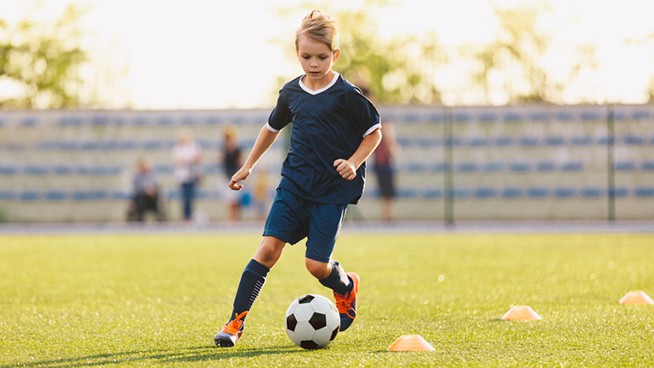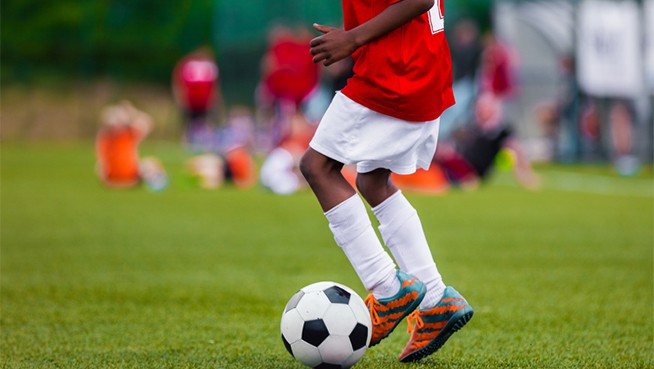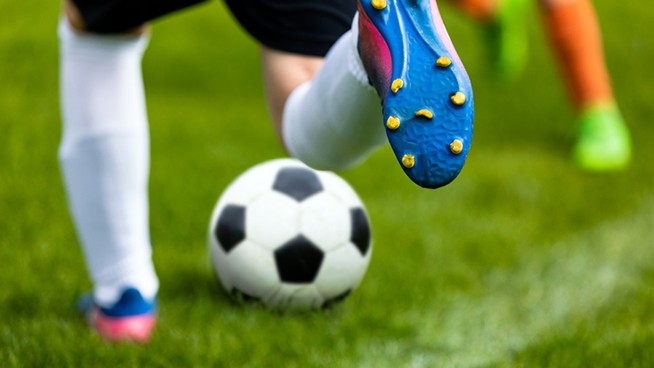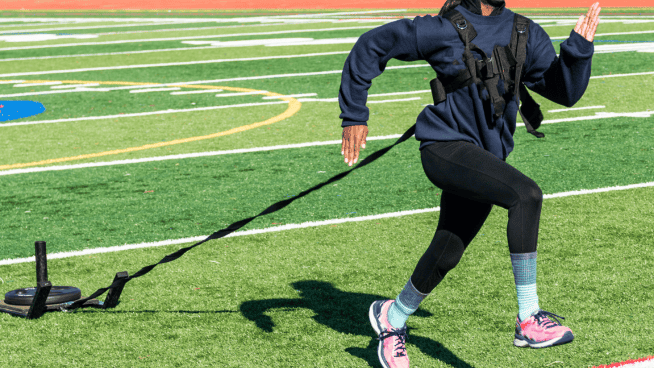Soccer Summer Training Program
Summer vacation is finally here! Now you can take a step back, breathe, and relax. You deserve it after all the hard work from tests, studying, and athletics. However, you don’t want to get too soft and relaxed from sitting around doing nothing. You need to maintain your fitness and strength for the next season. If you don’t, all you have gained will fall behind, and you don’t want to be rebuilding, playing catch up, during the season to maximize your performance.
Soccer Training Essentials
First, ensure you are training all the elements of soccer—for instance, aerobic endurance, interval training, speed and sprinting, and strength.
Your primary objective should be maintaining and increasing your soccer-specific conditioning and skills. Training a little bit each day will keep you on track rather than trying to cram your fitness in before the season begins, like trying to study the night before a test.
Being unprepared will hinder your performance, make you tired, and lead to injury.
Aerobic Exercise
Soccer-specific fitness depends on an athlete’s ability to sustain high energy throughout a game. Aerobic fitness is the foundation of this ability. A soccer player must build the cardiovascular system through sustained moderate-intensity to improve endurance and conditioning.
Perform two weekly workouts lasting 30-45 minutes. Choose activities that keep your heart rate between 60% and 75% of your maximum heart rate. Or, out of an RPE of 10, make it between 6 and 7.
You can mix up your activities to train different muscles. But make sure you are running since that is the primary motion for playing soccer.
Interval Training
Soccer is an interval training sport. Interval training helps you to mimic soccer play on the field. So, it is a perfect and effective way to develop your soccer performance.
A typical format for an interval workout, for example, is, to use your aerobic pace. The duration will be 20 minutes or more. For every 2 minutes of running, increase the intensity of running for 30 seconds to about 85%. So, if you are running at 60% intensity aerobically, kick it up to 85%. Then, after 30 seconds return to your aerobic base of 60% for two minutes. Repeat.
The purpose of this programming is to improve adaptation and diminish the fatigue that often happens after a short, intense burst of running on the field. So, you need to synchronize the systems.
Do as much as you can. If 20 minutes is too long then spread out the interval time to be longer like 3 minutes. You can do as many intervals as you want. End with a 5- to 10-minute cool-down jog.
Speed and Agility
Sprint speed is a little different when it comes to soccer. It is more about interval sprinting and change of direction. So, focus on short-range sprints between 10 and 30 yards one day with less recovery of about 30 seconds to one minute. And the next day, do longer-range sprints from 50-70 yards with a longer recovery of about 1-2 minutes.
When sprinting, try to perform about nine sprints. Only three sprints should reach about 95%, and six sprints should be 85%. You do not need to go as fast as you can. The first two sprints do 85%. The next one, do 95%. Follow the same format with the rest until you reach nine. Or if you can only dosix, you are finished. You don’t need to push it and get injured. For the longer sprints, just sprint 85%.
Strength Training
When strength training, focus on functional movements. Examples include lunging, single-leg deadlifts, and single-leg squats.
Agonist and antagonist training is perfect for upper body strength. It builds strength quickly and works with functional pull and press movement patterns. It will develop the proper amount of upper body strength a player needs. For example, do five reps of pull-ups, rest a few minutes, and do 5 reps of dumbbell shoulder presses. After the vertical movements, train the horizontals using bent-over back rows and dumbbell chest press in the same format—complete three sets each.
Stretching
Stretching improves flexibility to help enhance range of motion. It also assists in increasing your agility and change of direction.
Soccer players should be focused on lunges for glut stability and quad flexibility, single-leg hip hinges for stretching the hamstrings, incline-step for the calves, and lateral squat or Cossack stretch for the groin.
Stretch after your warmup and training as a part of your cool down.
Summer Soccer Fitness Program
Here is a basic easy summer fitness program to keep you in shape for the summer until the fall soccer season begins.
Summer Program Format
Monday: Speed- Short distance sprints.
Tuesday: Aerobic training for -30-45 minutes.
Wednesday: Interval training.
Thursday: Speed- Long Distances sprints.
Friday: Aerobic training for 30-45 minutes.
Saturday: Strength training.
Sunday: Rest.
The program is not in a sequential setup. It is designed to allow lower intensity training to recover from higher intensities and programmed for each session to enhance the effect on the next. For example, doing speed first and aerobics the next day will help your muscles rebuild and recover faster from the speed training. After the aerobic training day, interval training will help combine and adapt the aerobic and anaerobic systems to work together. This mimics soccer performance perfectly!
Remember, build what you need to progress your performance. Train the game! Doing some types of workouts are not necessary and will burn you out.
Soccer Season
When you begin your soccer season, you will have enough strength and conditioning to do complex training. Complex training is an excellent way to train to maintain your strength, speed, and explosiveness simultaneously, with little time spent in the gym!
Watch this to understand more about complex training.
RECOMMENDED FOR YOU
MOST POPULAR
Soccer Summer Training Program
Summer vacation is finally here! Now you can take a step back, breathe, and relax. You deserve it after all the hard work from tests, studying, and athletics. However, you don’t want to get too soft and relaxed from sitting around doing nothing. You need to maintain your fitness and strength for the next season. If you don’t, all you have gained will fall behind, and you don’t want to be rebuilding, playing catch up, during the season to maximize your performance.
Soccer Training Essentials
First, ensure you are training all the elements of soccer—for instance, aerobic endurance, interval training, speed and sprinting, and strength.
Your primary objective should be maintaining and increasing your soccer-specific conditioning and skills. Training a little bit each day will keep you on track rather than trying to cram your fitness in before the season begins, like trying to study the night before a test.
Being unprepared will hinder your performance, make you tired, and lead to injury.
Aerobic Exercise
Soccer-specific fitness depends on an athlete’s ability to sustain high energy throughout a game. Aerobic fitness is the foundation of this ability. A soccer player must build the cardiovascular system through sustained moderate-intensity to improve endurance and conditioning.
Perform two weekly workouts lasting 30-45 minutes. Choose activities that keep your heart rate between 60% and 75% of your maximum heart rate. Or, out of an RPE of 10, make it between 6 and 7.
You can mix up your activities to train different muscles. But make sure you are running since that is the primary motion for playing soccer.
Interval Training
Soccer is an interval training sport. Interval training helps you to mimic soccer play on the field. So, it is a perfect and effective way to develop your soccer performance.
A typical format for an interval workout, for example, is, to use your aerobic pace. The duration will be 20 minutes or more. For every 2 minutes of running, increase the intensity of running for 30 seconds to about 85%. So, if you are running at 60% intensity aerobically, kick it up to 85%. Then, after 30 seconds return to your aerobic base of 60% for two minutes. Repeat.
The purpose of this programming is to improve adaptation and diminish the fatigue that often happens after a short, intense burst of running on the field. So, you need to synchronize the systems.
Do as much as you can. If 20 minutes is too long then spread out the interval time to be longer like 3 minutes. You can do as many intervals as you want. End with a 5- to 10-minute cool-down jog.
Speed and Agility
Sprint speed is a little different when it comes to soccer. It is more about interval sprinting and change of direction. So, focus on short-range sprints between 10 and 30 yards one day with less recovery of about 30 seconds to one minute. And the next day, do longer-range sprints from 50-70 yards with a longer recovery of about 1-2 minutes.
When sprinting, try to perform about nine sprints. Only three sprints should reach about 95%, and six sprints should be 85%. You do not need to go as fast as you can. The first two sprints do 85%. The next one, do 95%. Follow the same format with the rest until you reach nine. Or if you can only dosix, you are finished. You don’t need to push it and get injured. For the longer sprints, just sprint 85%.
Strength Training
When strength training, focus on functional movements. Examples include lunging, single-leg deadlifts, and single-leg squats.
Agonist and antagonist training is perfect for upper body strength. It builds strength quickly and works with functional pull and press movement patterns. It will develop the proper amount of upper body strength a player needs. For example, do five reps of pull-ups, rest a few minutes, and do 5 reps of dumbbell shoulder presses. After the vertical movements, train the horizontals using bent-over back rows and dumbbell chest press in the same format—complete three sets each.
Stretching
Stretching improves flexibility to help enhance range of motion. It also assists in increasing your agility and change of direction.
Soccer players should be focused on lunges for glut stability and quad flexibility, single-leg hip hinges for stretching the hamstrings, incline-step for the calves, and lateral squat or Cossack stretch for the groin.
Stretch after your warmup and training as a part of your cool down.
Summer Soccer Fitness Program
Here is a basic easy summer fitness program to keep you in shape for the summer until the fall soccer season begins.
Summer Program Format
Monday: Speed- Short distance sprints.
Tuesday: Aerobic training for -30-45 minutes.
Wednesday: Interval training.
Thursday: Speed- Long Distances sprints.
Friday: Aerobic training for 30-45 minutes.
Saturday: Strength training.
Sunday: Rest.
The program is not in a sequential setup. It is designed to allow lower intensity training to recover from higher intensities and programmed for each session to enhance the effect on the next. For example, doing speed first and aerobics the next day will help your muscles rebuild and recover faster from the speed training. After the aerobic training day, interval training will help combine and adapt the aerobic and anaerobic systems to work together. This mimics soccer performance perfectly!
Remember, build what you need to progress your performance. Train the game! Doing some types of workouts are not necessary and will burn you out.
Soccer Season
When you begin your soccer season, you will have enough strength and conditioning to do complex training. Complex training is an excellent way to train to maintain your strength, speed, and explosiveness simultaneously, with little time spent in the gym!
Watch this to understand more about complex training.










